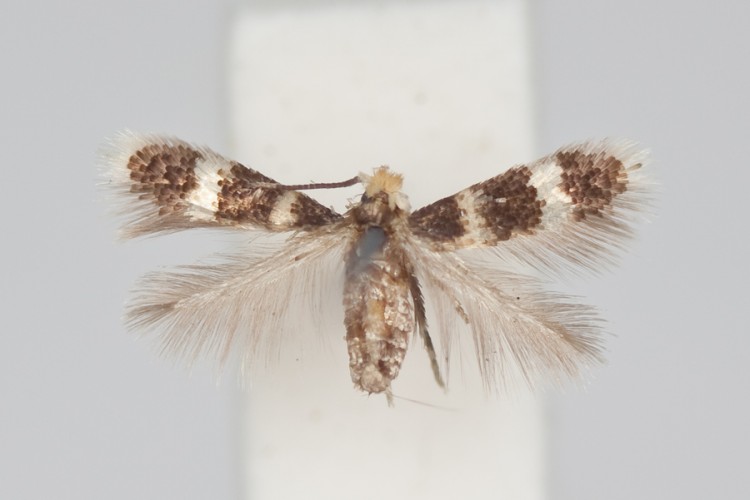Este luns saio do habitual Arctiinae por algo completamente diferente – un microlep! Este é un Nepticulidae, Estigma difascia, e mide nunha friolera 6 mm. Non podo tomar o mérito de espallar esta polilla – todos os neptículidos que fotografei son da Academia de Ciencias de California e difundidos por Dave Wagner mentres estaba aquí para un posto de posdoutorado..
As eirugas minan a parte superior das follas de Ceanothus e só se coñecen das estribacións de Serra Nevada en California. Se estás tan inclinado, a revisión das especies norteamericanas do xénero é libre dispoñible aquí (.pdf).


I could almost get interested in microleps, just for the challenge of getting good at spreading them.
It’s interesting – the scales don’t seem to have gotten tiny in proportion to the moth.
I like the sound of that! You did notice one of the amazing characters of this family, their scales seem to have remained normal size. Those orange tufts on the head are also huge scale eye-caps that nearly cover the entire eye.
Así, I’m guessing this is an example of a flying bug SO SMALL that the physics it deals with are different, so the wings are different than they would be on a comparable-but-much-larger moth? Or is that not quite happening at this scale? I can’t remember what high relative viscosity of air does to wings.
Hm… Now I’m thinking the wings start to look more like oars on super small fliers vs. feathery like this?
Así, how’s THAT for a wandering comment. =)
I think you are correct, that once you get this small the moth ends up “swimming” through the air more than flying. Many micros have increased their wing surface using long scales instead of a solid surface, I bet the greater surface area helps with flight. I do know there are some impressive wasps that are much smaller than this moth and have even less wing-like wings! I don’t know the physics at all though…
[…] Xullo 26, 2011PCS Phosphate: Participation is necessary, whether or not it’s required July 25, 2011Luns Moth xullo 25, 2011Hiatus July 25, 2011PCS Phosphate: Air quality permit sees light of day, stinks July […]